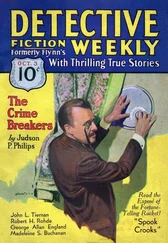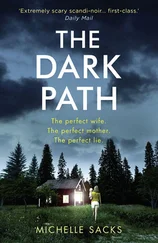Setting in a more limited sense, particularly architecture and houses, is important to characterisation, since people react to their environment and are influenced by it. When an author describes a room in the victim’s house, perhaps the one in which the body is found, the description can tell the perceptive reader a great deal about the victim’s character and interests. Furniture, books, pictures, personal articles in cupboards and on shelves, all the sad detritus of the dead life tell their story. For this reason the place in which the body is found is particularly revealing, and I regard the description of the finding of the body as one of the most important chapters of a detective novel. To find a murdered corpse is a horrible, sometimes life-changing experience for most normal people, and the writing should be vivid and realistic enough to enable the reader to share the shock and horror, the revulsion and the pity. The emotions of that moment and the language used to convey them should, in my view, reflect the person who makes the discovery. In A Taste for Death the description is particularly horror-invoking with the frequent reiteration of the word “blood,” because that is how the gentle and kindly spinster Miss Wharton experiences the moment of discovering the two bodies with their heads almost severed. In contrast, when Commander Adam Dalgliesh nearly stumbles over the body of a woman on a Suffolk beach his emotions are inevitably those of a professional detective. So although he is intrigued by his different emotional responses, between being called to a body knowing roughly what he will find and coming upon it unexpectedly at night on a lonely beach, nevertheless, almost instinctively, he is careful not to disturb the scene and notes all the details with the experienced eyes of an investigating officer. In Dorothy L. Sayers’s first detective novel, Whose Body ?, the corpse is found naked in the bath of a nervous and innocent architect, and the book begins with this image. The first question facing the police-and, of course, her detective Lord Peter Wimsey-is whether this was the corpse of Sir Reuben Levy, the missing Jewish financier. Whether the victim had or had not been circumcised would have answered the question at once, but this was a clue Miss Sayers was not permitted by her publishers to include in her novel, and no doubt had she done so there would have been an outcry among the respectable readers of the Golden Age.
The detective story is neither irrational nor romantic, and its clues are rooted in the reality and minutiae of everyday life. This means that British writers who look to a foreign country for their setting need not only a sensitive response to the country’s topography, speech and people, but a knowledge of its social structure, including the criminal justice system. Writers who have achieved notable success include Michael Dibdin (1947-2007), whose stories featuring the professional detective Inspector Aurelio Zen are set in Italy, a country in which he had resided. H. R. F. Keating’s Indian detective, Inspector Ganesh Vinayak Ghote of the Bombay Criminal Investigation Department, first appeared in The Perfect Murder in 1964. Ghote is attractively human, diffident and occasionally prone to error, but shrewd and intelligent, and it is remarkable how confident was Keating’s touch in describing a country which, when he brought Ghote to life, he had never visited. A comparatively recent arrival is Alexander McCall Smith’s Precious Ramotswe, the proprietor of the “No. 1 Ladies’ Detective Agency” in Botswana. Mma Ramotswe’s heart is as ample as is her frame, and although the most atrocious murders are unlikely to come her way, any injustice, large or small, engages her energies and compassion.
All these three characters, as well as their profession, have a private domestic life in which we can participate. The detective, whether professional or amateur, needs a domestic setting if the reader is to enter fully into his life, and most writers provide for their detective a known and familiar place in which he can be at home. The name Miss Jane Marple inevitably conjures up St. Mary Mead, and although Ruth Rendell’s Chief Inspector Wexford does occasionally travel outside England, we know that his natural place is Kings-markham in Sussex. Some detectives, of course, are more precisely housed. There can be very few aficionados of fictional murder who don’t know that 221B Baker Street is the address of Sherlock Holmes, that Lord Peter Wimsey lives in an apartment at 110A Piccadilly, Albert Campion in Bottle Street and Poirot in a modern London flat distinguished by the starkness and regularity of its contemporary furniture and, we may be sure, by the total absence of dust or disarray. If details of the apartments are not given, we can provide ourselves with a lively picture of these sanctums from the television series; indeed, it is often television rather than the books themselves that furnishes us with our pictures of both the characters and the setting.
And their houses are more than a living space for the detective hero. They provide for us, the readers, reassuring safe houses of the mind from which we too can venture forth vicariously to encounter murder and danger before returning to domestic comfort and safety. Readers of Dorothy L. Sayers, travelling home to mortgaged Metro land or worried by the threat of unemployment and the storm clouds over Europe, must have entered with relief into Lord Peter’s flat with the fire burning, shedding its light on the bronze chrysanthemums, the comfortable chairs and the grand piano, while Bunter deferentially offers them a glass of expensive sherry or vintage wine and Lord Peter entertains them by playing Scarlatti. Sherlock Holmes’s apartment, as described by Watson, perhaps offers a more dramatic and disturbing welcome, although we can rely on Mrs. Hudson to put things to right. All Holmes’s adventures start here, and it is to this sanctum that he returns, so that it becomes a safe haven for the reader who can share this assurance of safety and home comfort before setting out with Holmes and Watson on yet one more perilous adventure. Michael Innes has admitted that his hero’s natural setting was a great house and that Sir John Appleby found his way into those august dwellings largely because it was the kind of life he fancied. But for his creator the mansion or great country seat was really an extension of the sealed room, with the added advantage that it could define the territorial boundaries of the mystery more effectively and interestingly than could a cramped flat or semi-detached villa.
My own detective novels, with rare exceptions, have been inspired by the place rather than by a method of murder or a character; an example is Devices and Desires , which had its genesis while I was on a visit of exploration in East Anglia, standing on a deserted shingle beach. There were a few wooden boats drawn up on the beach, a couple of brown nets slung between poles and drying in the wind, and, looking out over the sullen and dangerous North Sea, I could imagine myself standing in the same place hundreds of years ago with the taste of salt on my lips and the constant hiss and withdrawing rattle of the tide. Then, turning my eyes to the south, I saw the great outline of Sizewell nuclear power station and immediately I knew that I had found the setting for my next novel.
This moment of initial inspiration is always one of great excitement. I know that, however long the writing may take, I shall eventually have a novel. The idea takes possession of my mind and gradually over the months the book takes shape, the characters appear and become increasingly real to me, I know who will be murdered and where, when, how, why and by whom. I decide how my detective, Adam Dalgliesh, can logically be brought in to investigate outside the Metropolitan Police area. I began my research by visiting nuclear power stations in Suffolk and Dorset, speaking to the scientists and other staff and learning as much as I needed to know about nuclear power and the way a power station is run. As usual, all the people I consulted were unfailingly helpful. The novel which resulted from this research and the long months of writing began with that moment of solitude on an East Anglian beach.
Читать дальше












